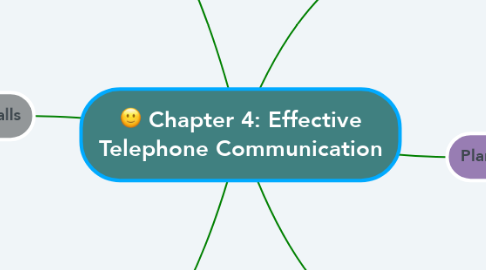Chapter 4: Effective Telephone Communication
by Shazleen Natasya


1. Making favourable first impression
1.1. voice
1.1.1. 1. Tone
1.1.2. 2. Pace
1.1.3. 3. Volume
1.2. Speaking Skills
1.2.1. 1. Grammar
1.2.2. 2. Vocabulary
1.2.3. 3. Pronunciation
1.2.3.1. Tips to improve pronunciation
2. Planning calls
2.1. Personal telephone calls
2.2. Calls on mobiles phone
2.3. Time zones
2.4. Conference skills
2.4.1. 1. Procedurs during the calls
2.4.2. 2. Planning a conference call
3. Incoming telephone calls
3.1. 1. Answer promptly
3.2. 2. Identify yourself
3.3. 3. Conclude the call
4. Outgoing telephone calls
4.1. 1. Long distance service
4.1.1. i) Factors
4.1.2. ii) Direct dial calls
4.1.3. iii) Prepaid phone card
4.1.4. iv) Toll-free service
4.1.5. v) Rate plans and regulations for toll free service plans vary widely
4.2. 2. Using directories
4.2.1. i) Electronic directories
4.2.2. ii) Directory assistance
4.2.3. iii) Personal company directories
4.2.4. iv) Local directories
4.2.4.1. yellow page
4.2.4.2. white page
4.3. 3. Operator assisted calls
5. Assisting calls
5.1. 1. Placing a caller on hold
5.2. 2. Transferring calls
5.3. 3. Handing difficult callers
5.4. 4. Handing a disconnected calls
6. Screening calls and taking messages
6.1. Screening calls
6.2. Giving information
6.3. Taking messages
6.3.1. 1. Each message should include the following
6.3.2. 2. Using a computer message offers these advantage
